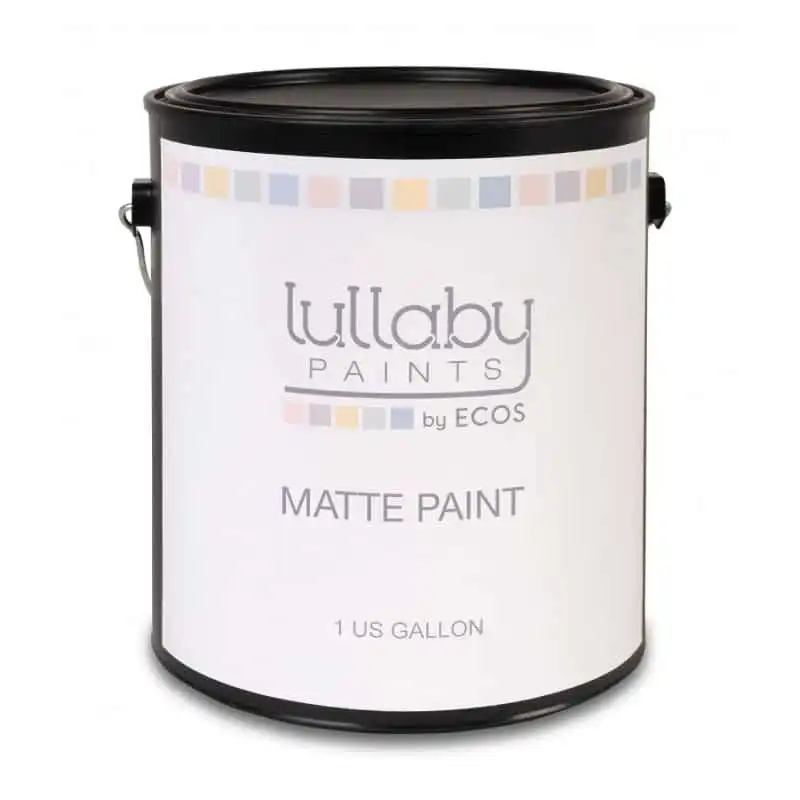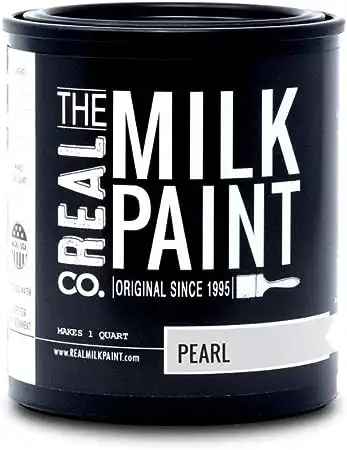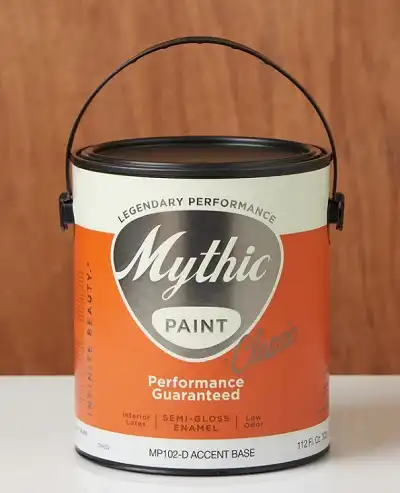- You are here:
- Home »
- Non Toxic Home Poducts »
- Is Water-Based Paint Toxic?
Is Water-Based Paint Toxic?
Concerns about toxic substances in paint have led to the popularity of water-based paints, but questions remain about their potential toxicity. This article explores studies on harmful chemicals, off-gassing, and non-toxic paint brands.
Understanding Harmful Chemicals in Paints
Traditional solvent-based paints contain volatile organic compounds (VOCs) that can emit harmful gases into the air, leading to adverse health effects.
These VOCs include chemicals like benzene, formaldehyde, and toluene. Studies have linked long-term exposure to high levels of VOCs to respiratory issues, headaches, and even cancer.
Let’s take a closer look at more toxic chemicals found in paints:
- Benzene: a colorless, flammable liquid linked to an increased risk of leukemia.
- Formaldehyde: a gas often used in household products like paints and adhesives; long-term exposure can cause nasal cancer.
- Toluene: a petroleum-based solvent found in paints and glues; it is linked to dizziness, memory loss, and kidney damage.
- Nonylphenol ethoxylated: a surfactant commonly found in paint and other chemical cleaners; it can reduce fertility in humans.
- Glycol ethers: a group of solvents linked to headaches, skin irritation, and reproductive issues.
- Phthalates: a group of chemicals used to soften plastics and increase colorfastness in paints; they have been linked to endocrine disruption.
- Metals: metals like lead and cadmium are sometimes present in traditional solvent-based paints; their presence increases the risk of brain damage.
- Crystalline silica: a mineral often used in paint and other products to increase durability; it is linked to lung cancer.

Water-Based Paints: A Safer Alternative
Water-based paints, on the other hand, have gained popularity due to their lower VOC content and reduced environmental impact. By replacing petroleum-based solvents with water, these paints significantly reduce emissions of toxic substances.
However, it is important to note that water-based paints may still contain small amounts of VOCs, although at levels significantly lower than solvent-based paints.
Read More: Is Oil Paint Safe?
Off-Gassing and the Drying Process
Off-gassing refers to the release of chemicals into the air as paint dries. While water-based paints emit some VOCs during drying, the levels are considerably lower than solvent-based paints.
The majority of VOCs released from water-based paints are released within the first few days of application, significantly decreasing over time. Adequate ventilation during and after painting can further minimize exposure to these compounds.
Studies on Water-Based Paint Safety
Many scientific studies have looked into the safety of water-based paints. For example, a comprehensive study by the U.S. Environmental Protection Agency (EPA) found that water-based paints have lower emissions of volatile organic compounds (VOCs) than solvent-based paints. This reduction makes the indoor environment healthier and helps reduce air pollution and its environmental impact.
Also, a detailed review in the Journal of Environmental Management highlighted the many health benefits of using water-based paints. The study concluded that these paints pose fewer health risks due to their lower VOC content, making them a safer choice for both professional painters and DIY enthusiasts.
03/07/2024 11:07 am GMTNon-Toxic Paint Brands:
In response to growing concerns about the potential health effects of paint, several manufacturers have introduced non-toxic paint options that prioritize safety. These brands often formulate their paints without harmful chemicals, making them a favorable choice for those seeking a healthier indoor environment. Some popular non-toxic paint brands include:
- Ecos Paints: These water-based paints are free from chemical solvents and heavy metals for a safe painting experience.
- Real Milk Paint: This no-VOC paint is 100% organic, perfect for wood, drywall and concrete.
- AFM Safecoat: This brand produces a range of non-toxic paints that are low-odor and safe for the environment.
- Mythic Paint: Formulated without VOCs, solvents, or any toxic substances, Mythic paints offer superior coverage and durability.
Non-Toxic Certifications
To help consumers identify safer paint options, certain organizations offer certifications for low or zero-VOC paints. The Green Seal GS-11 certification is particularly noteworthy. This certification ensures that paints, coatings, stains, and sealers are safer for human health and the environment relative to similar products in the market.
Paints with Green Seal-11 certification or those meeting its criteria despite not being officially certified are good choices. Make sure to check with manufacturers if their paints are Green Seal-11 certified.
Read More: How to Create a Toxin-Free Home?
Safer Paint Practices:
When choosing your paint, consider the following guidelines:
- Opt for low- or no-VOC paints: VOCs can contribute to indoor air pollution. Look for water-based latex paints low in VOCs, with less than 50 grams per liter for flat paint and no more than 100 grams per liter for non-flat paint. Always ask for low- or no-VOC pigments when adding color to the paint.
- Consider the number of coats needed: While low-VOC paints are a safer choice, total VOC emissions may not decrease significantly if multiple coats are required. Always consider the performance and durability of the paint for your project.
- Avoid “antifungal” or “antimicrobial” paints: These paints often incorporate pesticide additives that may pose health risks. Choose paints without these additives.
- Consider milk paints as an alternative: Milk paints are a healthier alternative to water-based latex or oil-based paints. They are composed of natural ingredients and minimally affect indoor air quality.
- Look for mineral- or plant-based pigments: Pigments that are mineral- or plant-based are less toxic to produce and pose fewer health risks compared to conventional paint pigments. They are also a more sustainable choice.
- Use alcohol- or soy-based paint strippers: Traditional paint strippers made with methylene chloride can release dangerous fumes and carcinogens. Choose alcohol- or soy-based paint strippers to minimize risk.
- Work in a well-ventilated area: Ensure proper airflow by opening windows and maintaining a well-ventilated area when using even low-VOC paints to decrease exposure to paint fumes.
- Wear a respirator when sanding: When preparing the surface for painting by sanding or other dust-creating activities, wear a respirator to reduce the risk of inhaling fine particles.
FAQs:
Are water-based paints completely free of toxic chemicals?
While water-based paints have significantly lower levels of toxic chemicals compared to solvent-based paints, it’s important to note that they may still release small amounts of VOCs.
However, reputable manufacturers are working towards formulating paints with minimal or no toxic substances. Look for non-toxic paint brands and certifications to ensure a safer choice.
How long does off-gassing from water-based paints last?
Off-gassing from water-based paints occurs primarily during the drying process. The majority of VOCs are released within the first few days after application.
However, the levels decrease significantly over time. Proper ventilation, such as opening windows or using fans, can help accelerate the process and reduce exposure.
Can water-based paints cause allergic reactions?
While allergic reactions to water-based paints are relatively rare, it is still possible for individuals with specific sensitivities or allergies to experience adverse reactions.
If you have known allergies or sensitivities, it’s recommended to test a small patch of painted surface and observe any reactions before proceeding with a larger project.
Are non-toxic paint brands more expensive?
Non-toxic paint brands generally cost more than other paints because of the extra costs associated with formulating a safer product.
However, some brands offer discounts and promotions to make their products more affordable. In addition, the long-term health benefits associated with non-toxic paints may outweigh any initial financial considerations.
Are there specific certifications to look for when choosing non-toxic paints?
Yes, certifications such as Green Seal are reliable indicators of low VOC emissions and non-toxicity. These certifications ensure that the paint meets specific criteria for indoor air quality and environmental standards.
Look for Green Seal label on paint cans or check the manufacturers’ websites for certification information.
Can water-based paints be used for all surfaces?
Water-based paints are versatile and can be used on various surfaces, including walls, ceilings, wood, and metal. Be sure to read the instructions carefully and get advice from a professional about any specific requirements for your project.
Following these steps will ensure proper application and lasting results.
Are water-based paints as durable as solvent-based paints?
While water-based paints may not have the same durability as solvent-based paints, they still offer excellent coverage and protection. With proper preparation and application, water-based paint can last for years without needing to be redone.
Furthermore, many non-toxic brands now provide a wide range of colors and finishes that are just as durable as conventional paints.
03/07/2024 11:07 am GMTConclusion
Water-based paints offer a safer alternative to traditional solvent-based paints due to their reduced VOC content and lower environmental impact. While they may still emit some VOCs during the drying process, these levels are significantly lower compared to solvent-based paints.
By choosing non-toxic paint brands and ensuring proper ventilation during painting and drying, individuals can further minimize exposure to potentially harmful chemicals. Always consider certifications, such as Green Seal when selecting paint, as they provide additional assurance of a product’s safety.
Ultimately, by making informed choices, we can enjoy the benefits of paint while prioritizing the health and well-being of ourselves and our environment.
About the Author Kamila Flieger
My name is Kamila, and I'm passionate about researching non-toxic, organic products for the home. I believe it's so important to create a safe and healthy environment for our families, and I enjoy helping others do the same.




